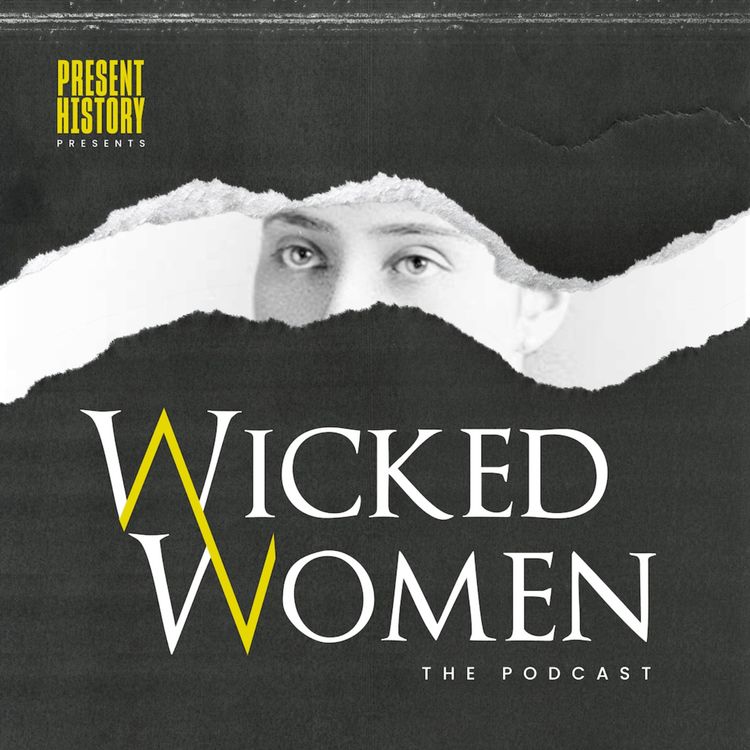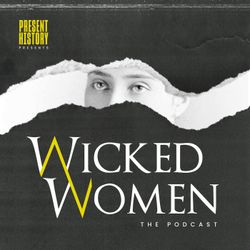Share

Wicked Women: The Podcast
Margaret Tudor
Margaret Tudor was the eldest daughter of King Henry VII and Queen Elizabeth of York and the elder sister of King Henry VIII. Margaret witnessed some of the most significant moments in her father’s later and her brother’s early reigns. A story filled with political intrigue, personal tragedy, and drama, Margaret has been largely left on the sidelines in later interpretations of Tudor history. Seen as insignificant at best and whiney and manipulative at worst, historian Linda Porter’s latest book, The Thistle and the Rose: The Extraordinary Life of Margaret Tudor looks to remedy that legacy and bring to light the truly remarkable life of Margaret Tudor. Keep listening to learn more.
Featured guest: Historian and author Dr. Linda Porter
Intro Music: Renaissance by Audionautix is licensed under Creative Commons Attribution 4.0.
More episodes
View all episodes

6. Judy Blume
39:52||Season 4, Ep. 6“I never planned to become an activist but things happen. You either take action or you don’t. Standing up and speaking out for what you believe in—well, it feels a lot better than doing nothing. And while you’re doing it, you find out you’re not as alone as you thought you were.” Judy Blume Judy Blume’s books such as Are you there God? It’s me Margaret, Forever, and Iggie’s House have become a standard for many young American readers since their publications in the 1970s. Breaking the bounds of what were acceptable topics for young readers, Judy Blume changed the face of what would become known as the Young Adult genre. In todays episode I’m joined by author Rachelle Bergstein as we discuss America’s most banned author of the 1980s and Rachelle’s latest book The Genius of Judy: How Judy Blume Rewrote Childhood For All of Us.
5. Katherine Howard in Fiction
51:18||Season 4, Ep. 5Katherine Howard, the fifth wife of England’s King Henry VIII, has rarely received a positive portrayal in fiction. Throughout the 20th century in books, tv series, and movies, she was depicted as frivolous, immature, hyper-sexual, forgettable, and at times cruel. In recent years, the popular musical Six has tried to reclaim Katherine’s story and has made her a cultural icon in the era of the #MeToo Movement. But are any of these depictions capturing the true Katherine Howard? In today’s episode, I will be joined by Leigh Wakefield, a historian whose recent masters dissertation focused on the cultural portrayals of Katherine Howard and how this has impacted Katherine’s legacy for future generations.
4. Women's Paths to Power
55:30||Season 4, Ep. 4Throughout the history of the Christian Church, women have held myriad roles. They have been preachers, saints, temptations, wives, sinners, and mothers. In recent generations with the rise of mainstream Evangelical Christianity, the roles of women in the church have shifted away from positions of power and influence. In today’s episode I am joined by Dr. Beth Allison Barr, author of The Making of Biblical Womanhood: How the Subjugation of Women Became Gospel Truth and her latest book Becoming the Pastor's Wife: How Marriage Replaced Ordination as a Woman's Path to Ministry. In our discussion, Dr. Barr traces the women’s leadership roles in the church from the Medieval era to the modern Evangelical church and how the role of a Pastor’s wife came to replace independent female leadership.
3. Writing Their Own Words
59:22||Season 4, Ep. 3Throughout history, roughly 50% of the human population has identified as female, while women only occupy around .05% of written history. In many cases from the past, even when women were referenced in history books it was written by men. In today’s episode, I will be discussing the lives of four Medieval women who not only wrote but put their names to their work; insuring they would be remembered for generations to come. Joining me to discuss Marie de France, Julian of Norwich, Christine de Pizan and Margery Kemp, is Hetta Howes, author of Poet, Mystic, Widow, Wife: The Extraordinary Lives of Medieval Women.
2. Women The History Books Left Out
48:05||Season 4, Ep. 2Rodgers and Hammerstein, George Gershwin, Stephen Sondheim, Leonard Bernstein: these are just a few names of composers and lyricists who changed the landscape and at times defined an entire era of Broadway. But what of the women who were writing shows at the same time? Why have some stories been included in the history books and others left out?In today’s episode I’ll be discussing these questions and more with Jennifer Ashley Tepper, a musical theater historian and producer and author of the book Women Writing Musicals: The Legacy that the History Books Left Out.
1. Mary I in Fiction
49:38||Season 4, Ep. 1The bloody visage of Mary I has existed in the public imagination since her death. Depicted as an abused daughter, a murderous maniac, an inept queen, a cruel sister, and a pathetic wife, Mary I has rarely received a positive portrayal. In recent years, scholars have worked on rehabilitating the image of a woman so often called Bloody Mary. In today’s episode, we go into the realm of fiction, and how it can help in breaking down stereotypes and humanize individuals from history. Joining me is Amanda Schiavo, author of the new book In Her Own Right: A Novel of Lady Mary Tudor.
14. Mrs. Mandelbaum
57:21||Season 3, Ep. 14The year was 1850. Manhattan was thriving, beginning to urbanize and expand in new ways. In lower Manhattan, a woman named Fredericka Mandelbaum moved into the neighborhood of Kleindeutchland (later known as the Lower East Side) to start a new life. Few could have guessed that out of the teeming streets of Little Germany, one of the most infamous underworld figures of the era would be born out of an unassuming Jewish housewife named Mrs. Mandelbaum. For 25 years, Mrs. Mandelbaum controlled a multi-million dollar criminal enterprise. She has been mainly lost to history…until now. Continue listening as I discuss this fascinating and much-overlooked woman with Margalit Fox, author of The Talented Mrs. Mandelbaum: The Rise and Fall of an American Organized Crime Boss.
13. Women of the Criminal Underworld
43:41||Season 3, Ep. 13Bugsy Siegel, Al Capone, Machine Gun Kelly, Clyde Barrow…these are just a few of the most recognizable American gangsters, men who robbed, killed, racketeered, and launched themselves into legend. But what of the women who stood by these men’s sides and at times exceeded the men’s criminal abilities? In today’s episode, I will highlight several powerful women from the underworld: Kathryn Kelly, Bonnie Parker, Stephanie St. Clair, Virginia Hill, Geri Rosenthal, and Liz Renay. Joining me for a conversation is Lissa Rodgers, the author of the recent book "Shameless: Women of the Underworld" who will share insights about these remarkable women and more.
12. Women Who Kill
46:01||Season 3, Ep. 12Just in time for Halloween, an episode dedicated to discussing the lives and legacy of Britain’s female murderers.Women throughout history have been seen as the weaker sex both physically and emotionally. While women have been blamed for the fall of men since Eve in the Garden of Eden, their crimes usually centered around sexuality. When women murder, this breaks all the expectations of what women are capable of. Rage, violence, cunning, and vengeance are traits often prescribed to men. In the new world of women’s history, these women complicate the narrative by providing anything but a role model for future generations. But they still provide an essential part of human history. Continue listening as I am joined by Erin Fetterly, author of the recently published book Women Who Kill, as we discuss some of Britain’s most notorious female murderers. Intro music: Wicked Women Theme by Kieren Peatling and A Singular Perversion - Darkness by Kevin MacLeod